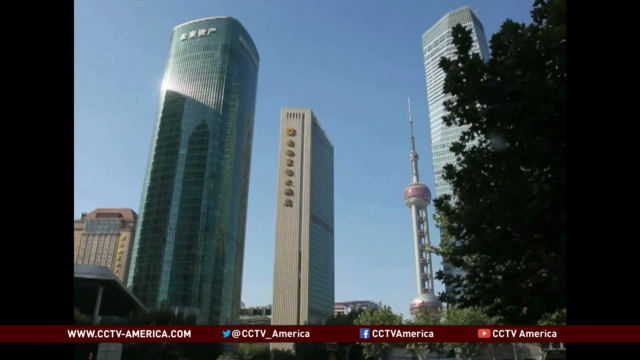China’s skyline grows taller every year. Shanghai Tower will become the country’s tallest building after its final step of installation. However, this crown may not last very long. CCTV America’s Lin Na reports.
Engineering feats aren’t just limited to solving environment challenges, they can also be applied to increase a city’s efficiency and beauty. As the world’s second largest economy, China is reaching new heights in terms of wealth, urbanization, and the size of buildings.
Nearly six years in the making, the Shanghai Tower — like the city that bears its name — is constantly reaching for the top. At 632 meters (2,073 feet), it’s China’s tallest skyscraper. However, more ambitious projects are under construction or waiting for approval, such as a 729-meter (2,392 feet) building in the neighboring city of Suzhou.
Skyscrapers have been sprouting up around China over the last two decades on an unprecedented scale. They have risen up to dominate the skyline in China’s big cities, like Beijing, Shanghai, and Guangzhou. Now this boom has been expanding to more second tier cities, like Shenyang in Liaoning Province and Nanjing in Jiangsu Province.
According to the world’s leading commercial real estate company the CBRE Group, China will account for 70 percent of the world’s construction of super-tall buildings in the next five years. Some people are asking if these super-tall skyscrapers are practical and really needed.
“There are many people driving this boom. Developers can get high revenues by building taller and increasing usable areas to balance the high price of land,” said Zhang Xiaochun, the editorial director of Time + Architecture Journal.
The drive to build the tallest building triggered a backlash in some second-tier cities, with city planners and architects criticizing some designs of being excessive and unrealistic.
“Skyscrapers are not just an issue of technology and construction, it is more like a social issue. Developers and planners should consider the city’s geographical and natural conditions, cultural heritages and its people,” said Zhang Xiaochun.
By 2016, China will have around 800 skyscrapers, which is four times the current number in the U.S. However, in a race to reach the sky, it’s important to stay grounded and understand a city’s balance between want and need.

 CGTN America
CGTN America
